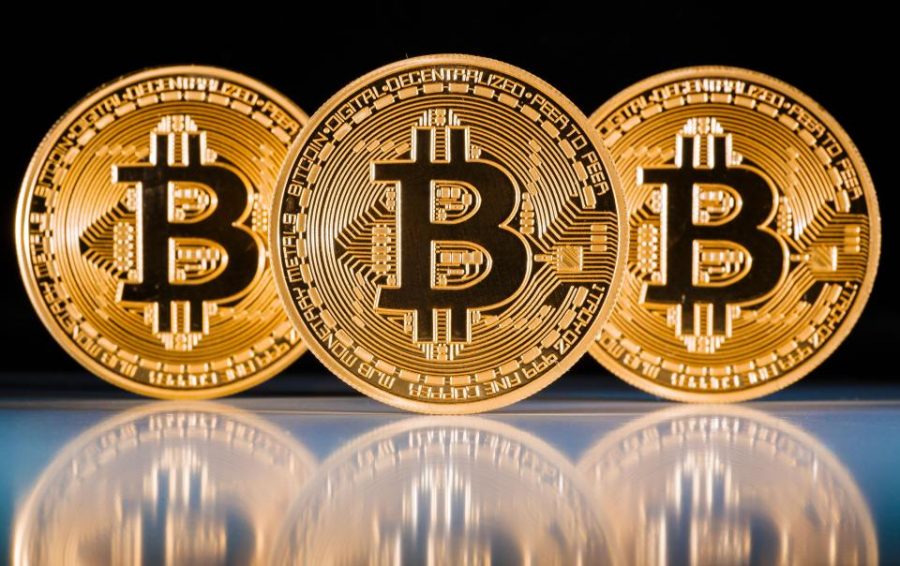Bitcoin: The new IT coin?
January 20, 2018
Ever wished of becoming an overnight millionaire just by sitting in the house doing nothing?
Luckily, technology might have finally made it possible to turn pennies into hundreds with just a click of the mouse through Bitcoin.
Monika Paneru first made her Bitcoin investment in mid 2017.
In just one month Paneru was able to make a profit of $400.
Like junior pre-medical laboratory science major Paneru, many college students are now starting to invest their weekly paychecks into this cryptocurrency.
Bitcoin beginning: Bitcoin was developed in 2009 by a programmer who, till this date, remains a mystery but goes by the pseudonym Satoshi Nakamoto.
Unlike fiat currencies like the U.S. Dollar or the Euro, Bitcoin does not depend on any central bank for supply and validation.
According to economics professor Dr. Tammy Johnston, the cryptocurrency is gaining its popularity by allowing investors to make money through trading it online without any third party involved, such as banks.
The idea of decentralizing money is what interested Paneru to invest in Bitcoin.
Bitcoin does not have an inherent or set value.
The price for a single Bitcoin at the beginning of 2017 was $800.
The value peaked at $19,000 and then tumbled to around $13,500 by the end of the year.
Bitcoin investment: There are two ways to acquire Bitcoins.
The first way, called “mining,” requires supercomputers to solve complex mathematical problems.
Users are rewarded blocks of Bitcoins for solving such problems.
Most of the users/investors, though, purchase Bitcoins through various trading websites.
Bitcoin bandwagon: “The constant supply and increasing demand are what causes the value of bitcoin to rise,” Paneru said.
Increased government oversight over the past few weeks in countries like South Korea and China has slowed the expansion.
However, as the mainstream population is starting to jump on the Bitcoin bandwagon, more businesses are expected to join the ride.
“I think more businesses will continue to accept Bitcoin. The cost of accepting Bitcoin for payment is cheaper (0-2%) compared to the (2-3%) fees for credit cards,” Johnston shared.
Bitcoin risks: Bitcoin, for many, is an investment and not just a decentralization of currency since its volatility is its exact beauty.
“I personally do not invest in Bitcoin. It is very risky as an investment and has had more volatility than gold or the S&P 500,” Johnston said.
Paneru shared that checking the Bitcoin value at least a few times a day has become a part of her daily routine.
“Within the same day the price changes in thousands so it is a risk when you decide to invest,” Paneru said.
Bitcoin suggestion: Since investing in Bitcoin is make-it-or-break-it, Johnston suggests first covering the monthly expenses and saving towards a “rainy day fund” before going and investing in Bitcoin.
“Most college students don’t have additional funds to cover unexpected expenses such as tire replacements or living expenses when you get laid off from your job unexpected,” Johnston said.
“Hence the riskiness and volatility is really not what you need to be seeking.” Bitcoin future: Bitcoin supply is strictly controlled.
The computers are set so only a certain number of Bitcoins can be mined every day.
According to statistics, Bitcoins will continue to be mined until the year 2140 when the total supply of Bitcoins in circulation is expected to reach the final amount of 21 million.
No one knows what the future holds for Bitcoin but one thing is for certain: the success or failure of Bitcoin will set the stage for the future of online money management.




Soumyadeep • Jan 22, 2018 at 2:11 pm
Along side the crypto coins, the affiliate marketing is another great way to earn money. This process is quite difficult. Here we will see some of the tricks and tips to solve affiliate marketing procedure. Please go through this link to know more.
https://tinyurl.com/y97744tb